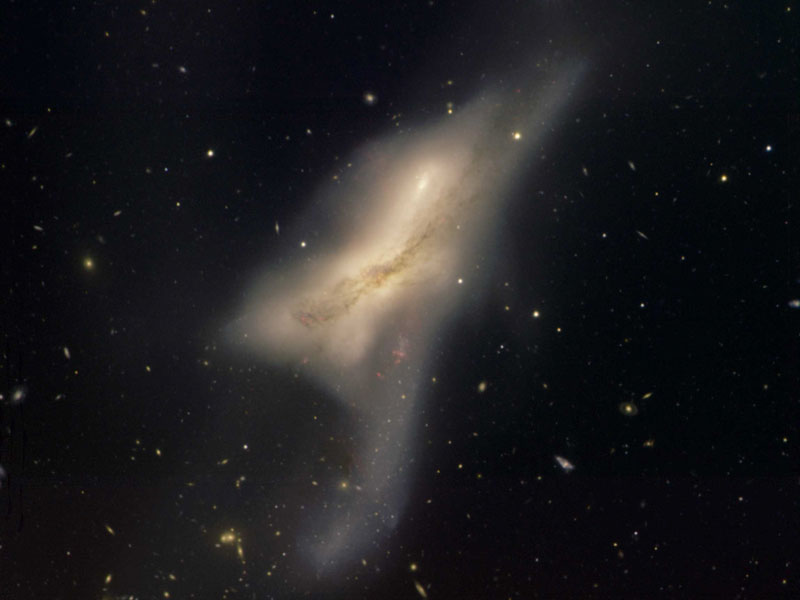
|
Explanation: Is this one galaxy or two? The jumble of stars, gas, and dust that is NGC 520 is now thought to incorporate the remains of two separate galaxies. A combination of observations and simulations indicate the NGC 520 is actually the collision of two disk galaxies. Interesting features of NGC 520 include an unfamiliar looking tail of stars at the image bottom and a perhaps more familiar looking band of dust running diagonally across the image center. A similar looking collision might be expected were our disk Milky Way Galaxy to collide with our large galactic neighbor Andromeda (M31). The collision that defines NGC 520 started about 300 million years ago and continues today. Although the speeds of stars are fast, the distances are so vast that the interacting pair will surely not change its shape noticeably during our lifetimes. NGC 520, at visual magnitude 12, has been noted to be one of the brightest interacting galaxies on the sky, after interacting pairs of galaxies known as the Antennae. NGC 520 was imaged above in spectacular fashion by the Gemini Observatory in Hawaii, USA. Also known as Arp 157, NGC 520 lies about 100 million light years distant, spans about 100 thousand light years, and can be seen with a small telescope toward the constellation of the Fish (Pisces).
|
January February March April May June July August September October November December |
| ||||||||||||||||||||||||||||||||||||||||||||||||
NASA Web Site Statements, Warnings, and Disclaimers
NASA Official: Jay Norris. Specific rights apply.
A service of: LHEA at NASA / GSFC
& Michigan Tech. U.
Based on Astronomy Picture
Of the Day
Publications with keywords: colliding galaxies
Publications with words: colliding galaxies
See also:
- APOD: 2025 May 7 Á Galaxy Wars: M81 versus M82
- APOD: 2024 July 30 Á Arp 142: Interacting Galaxies from Webb
- APOD: 2023 September 25 Á Arp 142: The Hummingbird Galaxy
- APOD: 2023 January 23 Á The Colliding Spiral Galaxies of Arp 274
- Galaxy Wars: M81 and M82
- NGC 1316: After Galaxies Collide
- NGC 4676: When Mice Collide
